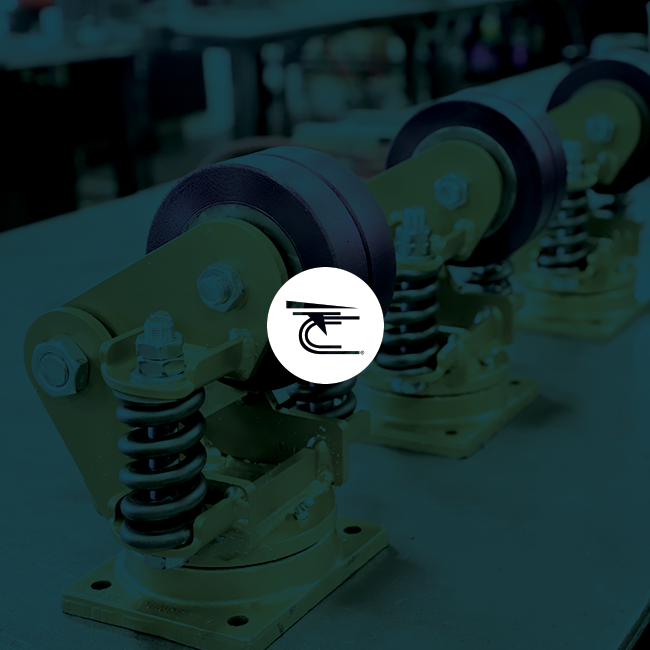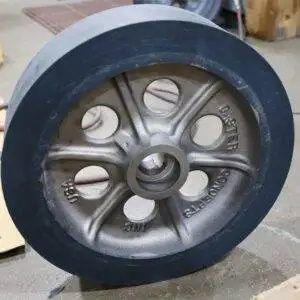

Polyurethane wheels will begin to break down or deteriorate over time in high-volume applications or abusive environments. Typically, once a wheel starts to break down it will do so fairly quickly. Once the chemical bond that holds the polyurethane and steel/aluminum wheel core together starts to deteriorate, the end is near.
With our new Vapor Degreaser, the process of removing contaminants and getting the highest quality bond is almost like clockwork. The Degreaser eliminates debris that can stick to the wheel before our bond agent is applied. If there is debris present and the polyurethane is applied, you’ll get a lower quality or even a bad bond. When this happens, you could see the entire polyurethane coating delaminate from the wheel core.
This is why I like to say the bond is all or nothing. Because once a bond begins to fail and polyurethane starts to come off a wheel expect that it will completely come apart or get to a point where it is no longer usable. Once this happens, we get asked whether remolding a wheel or retreading a wheel, as you might have heard it, is something we can do. The answer is yes, we can. There are a few factors that I believe you are going to want to consider before making a decision on getting wheels remolded.
 The first factor in determining whether you should get your wheel cores remolded centers on the wheel core. Not all wheel cores are alike. Some are castings that are made in high volume and bring you a low value. Others are custom-made from a billet or even machined and welded to fit a specific application. If the wheel cores are high value or just hard to get your hands in today’s market, then remolding is going to be a great way to go. If you have a fairly small wheel core, say 2’’- 4’’ in size, that wheel core might be something of a very low value to you. In that case, it could make more sense to just get a brand new wheel altogether.
The first factor in determining whether you should get your wheel cores remolded centers on the wheel core. Not all wheel cores are alike. Some are castings that are made in high volume and bring you a low value. Others are custom-made from a billet or even machined and welded to fit a specific application. If the wheel cores are high value or just hard to get your hands in today’s market, then remolding is going to be a great way to go. If you have a fairly small wheel core, say 2’’- 4’’ in size, that wheel core might be something of a very low value to you. In that case, it could make more sense to just get a brand new wheel altogether.
Another thing to consider when thinking about a remold is to consider what goes into the process and how it affects pricing. Wheels can come in all sorts of sizes and tread thicknesses. There isn’t a standard cost associated with remolds — they are done on a case-by-case basis. For example, bare wheel cores that just need to be cleaned and have polyurethane added to them would be cheaper than having to burn off the poly on an existing tread in order to get the wheel core down to its original bare core state. Another factor is the amount of poly we are able to burn off at any one time. This process is regulated by the EPA and something we are not able to control ourselves.
The last thing to consider when remolding a wheel is how many of them do you have? In manufacturing, you may have heard that increasing quantity can sometimes lead to a discount. That would be no different with remolds. Once we are done with the burn off process, being able to run larger batches of your wheels will help get you the best price. Typically, I would say batches of 24, 50, or even 100 would make sure you are taking advantage of that discount.